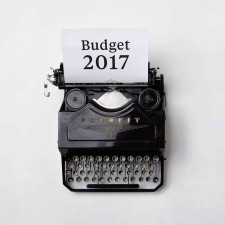WINTER / JUNE 2017
TOPICS IN OUR NEWSLETTER THIS QUARTER
Did we expect an easier ride from an election year budget? Yup. And we got it. The 2017 Budget’s bottom line is to boost spending, ease taxes and give some extra legroom to our growing population and economy.

The Budget combines tax breaks for working families with support for innovation and investment in business. The surplus predicted is largely earmarked for capital spend on infrastructure and there’s an intention to keep cutting back our net debt.
Business owners may see new opportunities, particularly in the emphasis on innovation and infrastructure, but they’ll have to make their own luck and keep those wheels turning.
A FAMILY SHOW
The early hints of tax relief for families have been fleshed out in the Family Incomes Package which will take effect from 1 April 2018. The legislation giving the changes effect was passed by Parliament the Friday after the Budget was read and at time of writing awaits Royal assent.
TAX BRACKETS
There’s a broad recognition that while the average wage has risen, the tax rates haven’t flexed to accommodate it. Moves into a higher tax bracket bit into wage rises for lower and middle-income families. The Government aims to tackle this by stretching the lower tax brackets. From 1 April 2018, the $14,000 income tax threshold will increase to $22,000 and the $48,000 threshold to $52,000.
The tax rates aren’t changing but the points where they cut in are changing (though there’s no change for the top tax bracket). If you were earning $22,000 a year, you receive a $560 tax saving each year; if you were earning $52,000 a year, it’s an annual tax saving of $1,060.
| Tax Rate | Current Bracket | New Bracket |
| 10.50% | $1-14,000 | $1-22,000 |
| 17.50% | $14,001-48,000 | $22,001-52,000 |
| 30% | $48,000-70,000 | $52,001-70,000 |
| 33% | $70,000+ | $70,001+ |
FAMILY TAX CREDIT
Balanced against the changes to the tax thresholds are changes to the Family Tax Credit. The abatement threshold will decrease from $36,350 a year to $35,000 and the abatement rate will increase from 22.5 cents to 25 cents in the dollar. So, if you receive the Family Tax Credit, the amount of Family Tax Credit you receive will start to decrease sooner and by more as your earnings increase.
The Family Tax Credit itself will increase for the first child under 16 by $9 a week, and for the other children under 16 by between $18 and $27 a week each.
INDEPENDENT EARNER TAX CREDIT
The Family Incomes Package gets rid of the Independent Earner Tax Credit (IETC). Less than a third of eligible people actually claim it during the year and increasing the $14,000 tax threshold to $22,000 largely compensates those who were receiving the IETC.
For some middle-income earners, the combination of the new tax thresholds and disappearance of the IETC results in an annual tax saving equivalent to the value of a flat white and big brekkie for two or a couple of mid-size grocery runs, depending on whose calculator you use.
HOUSING ASSISTANCE
After staying at the same levels for the last decade the Accommodation Supplement will increase. The Supplement assists beneficiaries, pensioners and lower income working families to meet rental, board or mortgage payments. For smaller households, it will increase by $25 to $75 a week and for larger households by $40 to $80 a week. Increases will be geared to recognise where people live in areas where housing costs have increased most.
Students who receive the Accommodation Benefit will see this increase by up to $20 a week.
“All New Zealanders deserve the opportunity to make the most of their potential, but we cannot provide that opportunity without a growing economy.” – Bill English
DEBT REMISSION…
Long heralded relief from the age-old problem of debt remission is now law. This is a huge boost to resolving a longstanding problem. Nevertheless, relief is not available in all cases so be careful. Instead relief is limited to arrangements within an economic group.
For companies that are members of the same wholly owned group, relief from debt remission income is uniform and unrestricted as between New Zealand parties. Often, however, we are dealing with other than a wholly owned group. In these circumstances, a proportionate debt rule applies. This rule seeks to ensure that relief from debt remission income is only available where there is no economic change for the debtor company and its shareholders. For example, where the debtor company has two shareholders, each with a 50% shareholding and each having advanced the same amount to the company, it would be common for both shareholders to write off the debts owed to them to the same extent. Where that occurs, there is no change in the overall economic position either for the debtor company or the shareholders. All that happens is the debtor company’s balance sheet is improved while the value of the shareholders’ investment in the company remains unchanged. In these circumstances writing off the debt triggers no tax liability.
On the other hand, if the debt is held by only one of the two shareholders, writing off the debt does alter the economic position. That is because the debt write off is suffered by one only of the shareholders. This results in an improved economic position for the other shareholder. In these circumstances writing off the debt will trigger a tax liability for the debtor company. Where the company is a look through company (LTC) the tax liability instead falls on the benefitting shareholder.
As always, care is required in tax planning. While it is true that relief from debt remission now exists, there are specific rules that limit the scope of the relief. In many cases with appropriate planning it ought to be possible to structure arrangements so as to fit within the scope of the rules.
2018 TAX YEAR CHANGES – BEGINNING 1 APRIL 2017
From 1 April 2017 being the beginning of the new 2018 tax year, the Inland Revenue has set new rules for business use of the home, also known as “Home Office”; as well as new rules for shareholder PAYE salaries.
Business use of Home (Home Office)
When determining whether a tax payer is permitted to claim a business use of a home, the premises or building have to be a separately identifiable part of the house, which is used primarily for business purposes.
Most people confuse this as a room that has to be set aside exclusively for business. This is not entirely correct. For example, a garage is a separately identifiable part of the house. If this is being used primarily for business use, it could also come under a use of home claim. However, if it is a double garage, it might be difficult to show the use is primarily for business if it houses a private vehicle as well as a business one.
There will be two options for calculating a claim for use of home:
Option 1 – Continue to make your calculations in the usual way.
Option 2 – Determine the percentage of mortgage interest and rates (or rent) used for business. Inland Revenue will then provide a per square metre rate to use to cover the other costs.
The home office calculation can be quite complex when considering the relevant expenditure and potential GST adjustments that may need to be made when preparing year end accounts. We recommend seeking the advice of a professional accountant before making such calculations to avoid the over or understatement of the home office expense.
Reducing Provisional Tax – Shareholder Employee PAYE Salary Top-Up
From 1 April 2017, shareholder employees will be permitted to take a PAYE salary during the year with a “lump sum top up” at year end.
As a 100% provisional tax payer, you generally pay three (or two) provisional tax instalments a year and the terminal tax is the difference at year-end, where the final tax is settled.
As a shareholder employee taking a PAYE salary, your tax is paid monthly relative to the amount of the salary. Any year-end top up will be subject to provisional tax, however the provisional tax will be minimised if the tax is efficiently covered by the PAYE on the salary during the year.
It is important to note that use of money interest still applies if provisional tax is underpaid. This method of paying tax is one way to reduce considerably large provisional tax bills.
Once a shareholder has elected to take a PAYE salary, they are not permitted to revert back to being a 100% provisional tax payer. They would however be permitted to reduce the salary as long as it’s not tax avoidance, which would transpire if the remuneration provided to the shareholder employee is deemed to be less than market rate remuneration for the services rendered.
IRD CORRESPONDENCE AND COMMUNICATIONS
The IRD continues to have some ongoing problems with the roll out of their new GST platform which was implemented on 7 February 2017. This includes IRD system generated communications, correspondence and notifications relating to GST.
This is an IRD issue and it is out of our control.
However we are available and happy to help as required if you do have an issue, or receive unexpected or unfamiliar correspondence from IRD. Please call or email your usual contact person, or one of the offices below.
INTRODUCING CHELSEA…
We are very pleased to introduce Chelsea…our new Receptionist.
Chelsea is the new welcoming face at JACAL Auckland office – she has a lovely manner and you will find her very friendly and helpful.
Her previous life was in the hospitality industry – their loss is definitely our gain!

IMPORTANT PAYMENT DATES TO REMEMBER
June 28th 2017
- GST returns and payment due for period ending May
July 28th 2017
- GST returns and payment due for period ending June
August 28th 2016
- GST returns and payment due for period ending July
- 1st Provisional Tax installment (for March balance date)
- Student Loan interim payment due date
The difference between ordinary and extraordinary is that little extra.
Jimmy Johnson
Disclaimer – While all care has been taken, Johnston Associates Chartered Accountants Ltd and its staff accept no liability for the content of this newsletter; always see your professional advisor before taking any action that you are unsure about.


